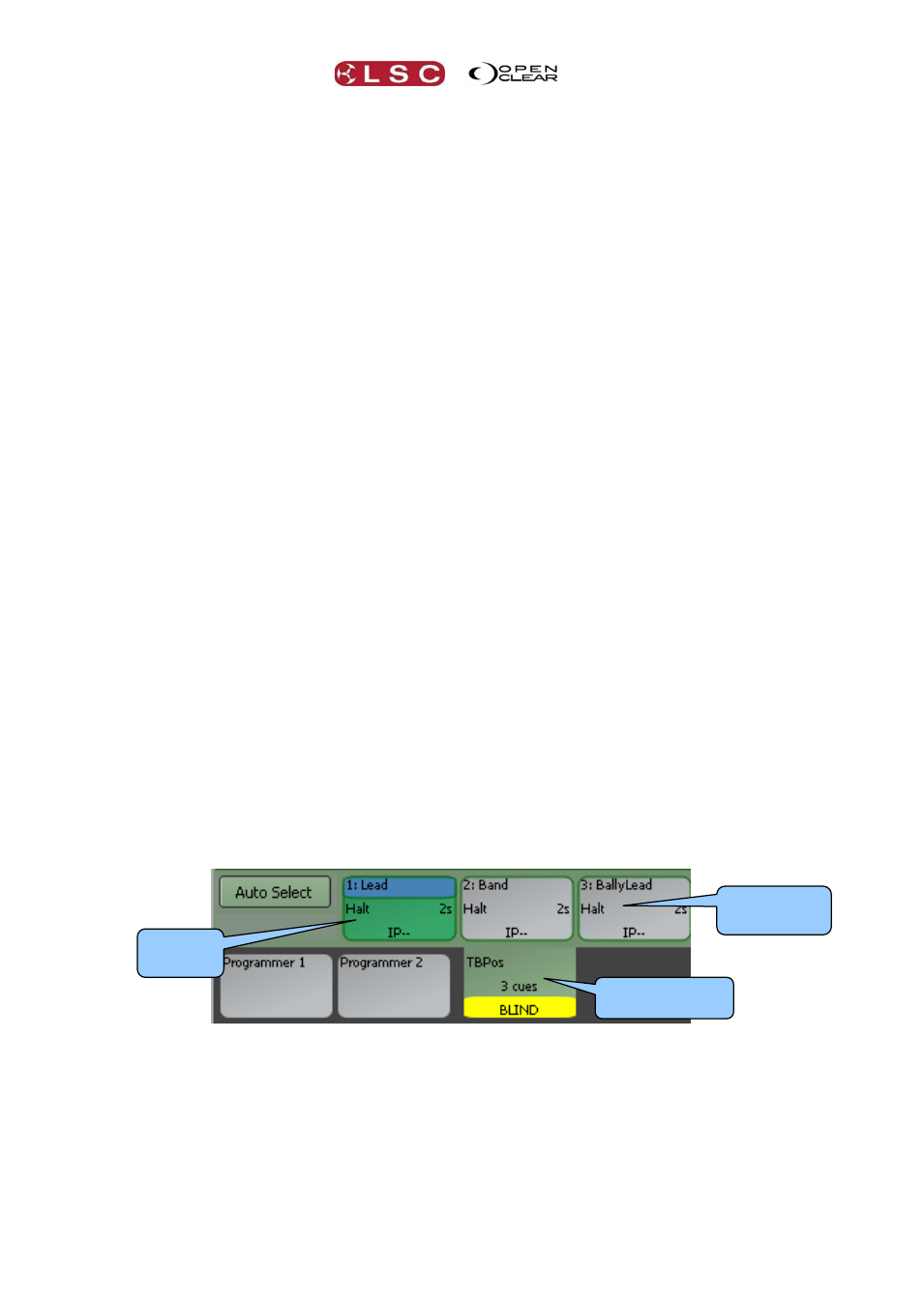3 editing a cue – LSC Lighting CLARITY LX Series v.1 User Manual
Page 194

Editing
Clarity
Operator Manual
Page 184
Each cue-list has a Trackback option ticked by default. This means that if this is a tracking
cue-list, Clarity will, if necessary, trackback through the cues and update the cue with the hard
value that has been tracked through to the current cue. If you deselect Trackback, the
updated attribute values will only be applied to the current cue.
Any presets that have been overridden are shown and ticked by default. This means that the
changes in the programmer will update the preset. After the preset is updated, any remaining
changes in the programmer will either be tracked back or applied to the current cue according
to your selection.
If the programmer also contains some new attributes that are not present in any of the cues
currently contributing to the output, then these will, by default, not be stored. If you want to
store this new information, select a location for it by clicking the drop down list near the bottom
of the Auto Update dialog box. You can choose to add this new information to any of the cues
currently contributing to the output.
In addition to all of these choices, the top of the Auto Update dialog box allows you to:
Mask any of the Intensity, Position, Colour and Beam attribute groups
Only include selected fixtures.
Preserve existing timing (trackback only).
Finally, you can choose to Clear stored information from programmer when finished by
ticking the box – any information that wasn’t stored remains in the programmer.
To update all of the selected cues and/or presets click Update.
26.3 EDITING A CUE
When the selected cue or cue-list is edited, it automatically opens an edit session in the
Programmer window and that session becomes the “current session” meaning that the encoder
wheel touch screen and controls can be used to perform the editing.
There are severall methods of selecting a cue to be edited.
To edit the contents of a playback, press Edit then press any flashing button on the
playback to be edited.
To edit the contents of a cue-list, in the Control Booth window, select the cue-list by
clicking on it then click List, Edit cue-list. You can also edit cues and cue-lists by
right-clicking on the cue or cue-list in the Control Booth or the Performance windows
and selecting Edit Cue-list or Edit Cue.
Editing a cue or a cue-list will load the cue-list into a new edit session at the bottom of the
programmer window and pre-select the relevant cue in the list.
Clicking Auto Select will automatically select all of the fixtures in the cue allowing them to be
edited by the programmer session. Alternatively you can select individual fixtures or multiples or
groups and use the Programmer controls to edit the cues. You can click on any of the cues in the
edit session to edit them.
The Record button changes its name to Save and the button below to Save As.
Edited cue-lists and cues can be identified by their different coloured attribute controls that
show if the attribute’s value has been altered by the programmer.
Cue being
edited
Cue-list being
edited
Click on a cue
to edit it